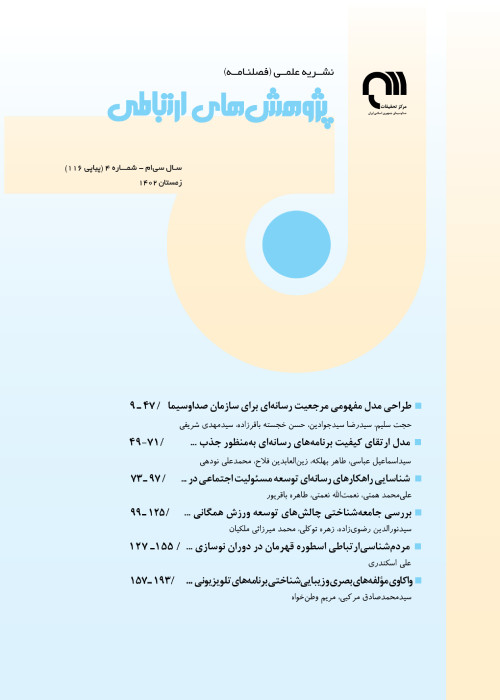Media Policy in Public Policy Making Using Interpretive Structural Modeling Technique
The main purpose of this paper is to study the needs of paying attention to media policy in public policy making. First, eight categories of factors related to the research topic were identified through comprehensive review of the research literature, and then categorized into 4 levels using interpretive structural modeling techniques. The population consisted of 20 academic specialists who were selected by purposeful sampling. The results of the research showed that the criterion of guaranteeing the rights of individuals and groups of society were at the first level; increasing media literacy, competitive market and privatization, attention to macro and strategic levels and media interactions on public policy were at the scond level; responsibility, accountability and freedom within the norms and values of society were at the third level; and the criterion of the foreseen legal system were at fourth level (the lowest level). Among the four levels, the first level criteria have the most impact on media policy making.
-
هنرآفرینی شغلی، رضایت و فرسودگی شغلی کارکنان شرکت های تولیدکننده لاستیک در ایران
ابراهیم رجب پور*، ، محمد مرادی، محمدرضا فتحی
نشریه صنعت لاستیک ایران، زمستان 1401 -
The Phenomenon of Organizational Forgetfulness in the Context of Organizational Culture: Applying the Combined Approach of Theme-Dimatel Analysis (Case Study: Social Security Organization)
, Ebrahim Rajabpour *, Ali Heidari, Seyed Saeed Najibi
Standard and Quality Management Journal, -
Designing the Media Policy Model of Iran Social Security Organization
Taher Roshandel Arbatani , *
Social Welfare Quarterly,




